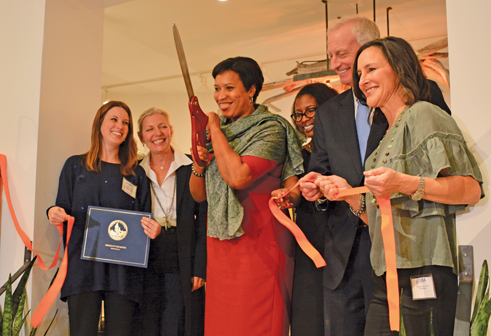Georgetown Kicks Off New Main Street

By Zoe MorganCurrent CorrespondentGeorgetown has become the latest neighborhood to join the DC Main Streets program, with a planned focus on attracting and maintaining small businesses along the neighborhood’s Wisconsin Avenue corridor.The Georgetown Main Street group has received a one-year, $175,000 grant from the D.C. Department of Small and Local Business Development to revitalize the area on, and directly surrounding, Wisconsin Avenue from the waterfront north to Whitehaven Parkway. The city’s seed money is intended to help get the new nonprofit off the ground and is renewable, however Georgetown Main Street will also need to secure its own additional funding.“The impetus for starting a Main Street is to support the small businesses that are currently on Wisconsin Avenue,” Georgetown Business Association president Sonya Bernhardt told The Current. “And the reason why we are particularly interested in small businesses is because they provide a unique flavor to a community and they are original.” The business group applied for the city’s grant to start the local Main Street, though the new group will function independently, said Bernhardt, owner and publisher of The Georgetowner.Bernhardt said that the Main Street group wants to retain the small businesses already present along Wisconsin Avenue and attract more to the corridor’s empty storefronts. In particular, she is interested in bringing new restaurants to Georgetown able to match the award-winning eateries operating in other parts of the city.“We want to be able to create an environment that’s attractive for small businesses,” Bernhardt said. “And to be able to be a supporting arm, and someone that they can lean on, when they get into a situation, or when they need some help.”Although Bernhardt said it’s premature to know what specific programs and initiatives the group will pursue, organizers intend for Georgetown Main Street to complement the long-running efforts of the neighborhood’s business improvement district through its focus on small businesses in the Wisconsin corridor — rather than on all commercial enterprises, large and small, throughout Georgetown. Unlike the Georgetown BID, which receives a portion of commercial property taxes to fund large-scale programs, the Main Street will rely on donations and grants for its more targeted initiatives.There are currently 16 Main Street groups recognized by the District, focused on revitalizing existing commercial areas. The groups are generally led by volunteers overseen by one full-time staff member. Other recently established Main Streets include Lower Georgia Avenue, Kennedy Street/Upper 14th Street and Minnesota Avenue.Georgetown Main Street needs to have an executive director in place by Dec. 1, and interviews for the position are ongoing, Bernhardt said. Once an executive director is in place, a board of directors will be formed. Bernhardt also plans to work to forge relationships with the Georgetown BID and Advisory Neighborhood Commission 2E (Georgetown, Burleith). Broadly, the group will work to determine what residents want and what can be done to make Wisconsin Avenue more attractive to businesses.Georgetown Main Street held a ribbon-cutting ceremony last Wednesday at The Phoenix, a third-generation family-owned boutique at 1514 Wisconsin. Mayor Muriel Bowser and Ward 2 D.C. Council member Jack Evans were among the speakers. “This is a great day for Georgetown,” Evans said at the Oct. 25 event.The Department of Small and Local Business Development expects the Main Street to raise money independently. Applicants for Main Street grants should be able to match the city funds with money raised from private sources, although there is no minimum required match, the agency says.“What Main Streets are is really the government putting in the first money,” Bowser said at the event. “And it’s you working hard to secure all of the other programs, and services, and initiatives, and private funding that are really needed to sustain a healthy Main Street.”
This article appears in the Nov. 1 issue of The Georgetown Current newspaper.




